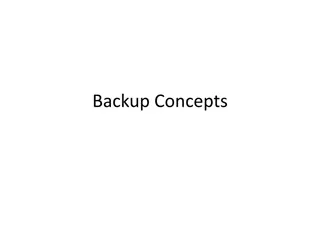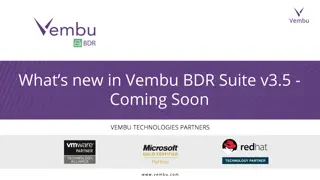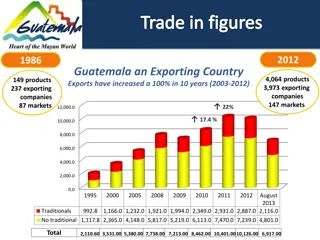Overview of Rule 21 Non-Exporting and Backup Options
This content provides an overview of Rule 21 Non-Exporting and Backup options. It covers non-exporting projects, backup systems, inadvertent exports, NEM solar with paired storage, and non-export options for storage under the Rule 21 tariff/option. Detailed information is presented regarding project configurations, typical study processes, equipment upgrades, and interconnection requirements.
Download Presentation

Please find below an Image/Link to download the presentation.
The content on the website is provided AS IS for your information and personal use only. It may not be sold, licensed, or shared on other websites without obtaining consent from the author.If you encounter any issues during the download, it is possible that the publisher has removed the file from their server.
You are allowed to download the files provided on this website for personal or commercial use, subject to the condition that they are used lawfully. All files are the property of their respective owners.
The content on the website is provided AS IS for your information and personal use only. It may not be sold, licensed, or shared on other websites without obtaining consent from the author.
E N D
Presentation Transcript
Rule 21 Non-Exporting and Backup Overview
Overview Non-Export, Backup and Inadvertent Export Options I. Summary Overview of Existing Options (Non-Export, Backup and Inadvertent Export) and Common Configurations II. Upcoming 2020 Activities III. Questions 2
Overview Non-Export, Backup and Inadvertent Export Options I. Non Exporting Projects Overview SCE customers that operate generation systems for customer s use only and do not export power for sales to SCE s electric grid are referred to as non-export (or non-exporting generators. Non-export projects include all generating facilities to be operated by, or, for a customer to serve part or all of its electric energy requirements that would otherwise be provided by SCE, including distributed generation , cogeneration , emergency , backup and standby generation. - Backup Systems are non-exporting generators used by customers to serve part or all of their electrical needs during a power outage. While customers operating in backup systems under either momentary parallel or isolated mode are not obligated to enter into an interconnection agreement with SCE, notice still needs to be provided to SCE in accordance with California Health and Safety Code 119085(b) - Inadvertent Export These systems are optimally sized to meet the customers peak demand. These systems have generator controls to ensure export of electrical power to SCE s electric system is minimized. The event of exporting uncompensated power for less than 60 seconds is referred to as Inadvertent Export II. Non-Exporting Projects Generally Provide for Expedited Reviews Looking to 2020, SCE looks to engage in additional customer outreach and a project configuration overview is provided to assist with 2020 planning and education 3
Rule 21 NEM Solar With Paired Storage Tariff/Option: NEM + Paired Storage Typical Study Process: Fast Track [Initial Review] Typical Upgrades: Transformer and secondary conductors Interconnection Equipment: UL CRD control systems with 10 seconds or less Open Loop Response (>10KW storage facilities). Other Alternatives ( Non-export relay, NGO meter) are available for generally take longer to implement Storage Sized to 150% of solar maximum storage capacity
Rule 21 Non-Export Options (Storage) Tariff/Option: Rule 21 Non-Export Option Typical Study Process: Fast Track [Initial Review] Typical Upgrades: Telemetry for large projects 1MW Interconnection Equipment: Installation of relays for monitoring and control or UL CRD control systems with 2 seconds or less Open Loop Response (export) When UL CRD is used, Only UL 1741/SA Inverter based Technology are part of the generating facility UL CRD control systems with up to 30 seconds Open Loop Response (inadvertent export) When UL CRD is used, Only UL 1741/SA Inverter based Technology are part of the generating facility
Rule 21: Momentary Parallel Operation Tariff/Option: Rule 21 Momentary Operation Option Typical Study Process: Momentary (<1second) Closed Transition Evaluation Typical Upgrades: None Interconnection Equipment: Relaying and control logic
Rule 21:Isolated Operation (Backup) Tariff/Option: Rule 21 Isolated Operation Option Typical Study Process: Open Transition Review Typical Upgrades: None Interconnection Equipment: Open Transition Switch
Non Non- -Exporting Review Exporting Review Questions??























